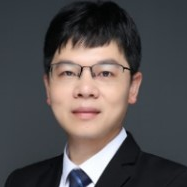Editorial Board Members' Collection Series: Stem Cells and Stem Niches: Homeostasis, Repair and Regeneration
A special issue of Biology (ISSN 2079-7737). This special issue belongs to the section "Cell Biology".
Deadline for manuscript submissions: closed (31 August 2023) | Viewed by 1372
Special Issue Editors
Interests: stem cells; stem cell niche; tissue/organ regeneration; animal models; deer antlers
Interests: fish germ cells; fish stem cells; cell transplantation; fish sex determination and differentiation
Special Issues, Collections and Topics in MDPI journals
Special Issue Information
Dear Colleagues,
The increase in discoveries and experience in the field of stem cell applications has brought new hope for relief in those suffering from intractable diseases. Stem cells are capable of maintaining their own pool through self-renewal and can differentiate into specialized cells of various tissues in response to certain signals (such as injury). The stem cell pool in adult organisms is predominantly represented by multipotent stem and progenitor cells, which are key participants in homeostasis and tissue repair and regeneration.
In general, the maintenance of a quiescent stem cell population throughout an organism’s lifetime requires that it be localized at a specific anatomical site defined as the ‘niche’. A pool of adult stem cells, together with its regulatory specific niche, constitutes a functional unit. A principal factor in the organization of the stem cell niche is direct cell–cell contact between the stem cells and their closely associated differentiated populations. A range of extrinsic factors, including specific extracellular matrix components and associated growth factors, contribute further elements. Moreover, physiological conditions contribute elements that support the distinct milieu characteristic of the niche. The primary role of the niche in adult tissues is to protect the stem cells from pro-differentiation stimuli, thus regulating their proliferation.
However, the stem cell population of the niche is activated intermittently in tissues which undergo regular renewal, or episodically in response to appropriate cues such as tissue damage, to provide the necessary transit populations required for tissue rebuilding. Specific interactions within the domain of the niche are considered essential to trigger this expansion. Any interruption in the interactions between the stem cells and their niche cause disruptions at the cell, tissue, organ or even organism level. Understanding the molecular mechanism underlying such disruptions should help in the development and assessment of potential treatments, and thus, lead the way to clinical applications.
In this Special Issue, “Stem Cells and Stem Niches: Homeostasis, Repair and Regeneration”, we welcome original research articles and reviews on this topic to highlight the molecular mechanisms underlying stem cell maintenance, directional differentiation and related disorders, with the aim of improving human health. Research areas include (but are not limited to): basic and applied research on stem cells (embryonic and/or adult stem cells), stem cell-conditioned medium and stem cell exosomes; stem cell interactions with their autocrine, paracrine and endocrine niches at different levels (cell, tissue and organ); and the application of stem cells and stem cell products to treat different diseases in animal models and in clinics.
We look forward to receiving your contributions.
Prof. Dr. Chunyi Li
Prof. Dr. Mingyou Li
Guest Editors
Manuscript Submission Information
Manuscripts should be submitted online at www.mdpi.com by registering and logging in to this website. Once you are registered, click here to go to the submission form. Manuscripts can be submitted until the deadline. All submissions that pass pre-check are peer-reviewed. Accepted papers will be published continuously in the journal (as soon as accepted) and will be listed together on the special issue website. Research articles, review articles as well as short communications are invited. For planned papers, a title and short abstract (about 100 words) can be sent to the Editorial Office for announcement on this website.
Submitted manuscripts should not have been published previously, nor be under consideration for publication elsewhere (except conference proceedings papers). All manuscripts are thoroughly refereed through a single-blind peer-review process. A guide for authors and other relevant information for submission of manuscripts is available on the Instructions for Authors page. Biology is an international peer-reviewed open access monthly journal published by MDPI.
Please visit the Instructions for Authors page before submitting a manuscript. The Article Processing Charge (APC) for publication in this open access journal is 2700 CHF (Swiss Francs). Submitted papers should be well formatted and use good English. Authors may use MDPI's English editing service prior to publication or during author revisions.
Keywords
- stem cell
- stem cell niche
- interaction
- mesenchemal stem cells
- embryonic stem cells
- extracellular matrix
- single-cell sequencing
- spatial transcriptome
- tissue/organ regeneration







